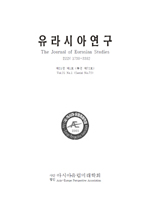- 영문명
- Korean law terms that came from Japanese through the formulation process of temporary, exclusion, single, combination
- 발행기관
- 아시아.유럽미래학회
- 저자명
- 김동욱(Dong-Wook Kim)
- 간행물 정보
- 『유라시아연구』제8권 제4호, 197~218쪽, 전체 22쪽
- 주제분류
- 사회과학 > 사회과학일반
- 파일형태
- 발행일자
- 2011.12.30
5,440원
구매일시로부터 72시간 이내에 다운로드 가능합니다.
이 학술논문 정보는 (주)교보문고와 각 발행기관 사이에 저작물 이용 계약이 체결된 것으로, 교보문고를 통해 제공되고 있습니다.

국문 초록
법령 용어는 입법 당시부터 완벽을 기대하기 힘들며, 점차 사회 상황에 변화가 생기기 때문에 보편타당한 완벽한 법령 용어란 있기 힘들다. 그러기에 안정된 법령 용어로 정착하는 과정, 즉 ‘정립 과정’을 거치게 된다. ‘법령 용어의 정립’이란 법률어가 법규의 표현수단으로써 유효한 상태임을 의미한다. 법률어도 정립 당시의 결정사항과 모순되는 변화요인을 포함한 채로 서서히 안정적으로 정립되어 가는 것이다. 지금 이 순간에도 하루하루 변천 과정을 거치고 있다고 볼 수 있다.
‘법령 용어의 정립’은 효력 관계를 따지는 잠정 정립과 배제 정립 또한 어격(語格) 관계를 따지는 단행 정립과 병행 정립으로 나눌 수 있겠다. 정립 과정은 획일적이고 명확한 경계선이 있는 것이 아니며, 여러 법규들의 구체적인 표현마다 같은 용어라도 균일하지 못 한 쓰임새가 나타나는 것은 어쩔 수가 없는 측면이 있다. 정립 과정 4분류에 근거하여 일본어의 법령 용어 정립 사례를 살펴보고 한국어의 법령 용어와 어느 정도 유사하고 상이한지 분석하였다.
·효력의 관계를 따져 잠정(暫定) 정립과 배제(排除)정립
·어격(語格) 관계를 따져 단행(單行)정립과 병행(竝行)정립
법령 용어와 일상어 양쪽 모두 서로 간에 영향을 주고받으며 변화를 거치는 정립 과정을 거치게 된다. 법령 용어의 정립 과정에서 일본 법령 용어의 유래와 한국 법령 용어의 의미가 어떻게 유사하고 다르게 안정화되었는가를 살펴보는 것은 향후 알기 쉬운 우리말 법령 용어 개선 작업에 유용한 기초 자료로 활용될 수 있을 것이다.
또한 향후 법령 용어의 개선 작업은 신중을 기해야 할 것이다. 중요하고 사용빈도가 높으면서 일반 국민이 이해하기 어려운 법령 용어를 선별하여 이를 우선하여야 할 것이다. 난해한 법령 용어와 일본어로부터 유래된 한자어를 예외 없이 모두 알기 쉬운 순우리말로 바꾼다는 것은 불가능할지도 모른다. 언어마다 본질적인 차이가 있어서 순우리말 어휘로는 정확하게 기존 한자어에 대체하기 힘든 경우가 많기 때문이다.
영문 초록
Our social situation change gradually, So we can’t hardly expect perfect law terms from the beginning. The current social situation may be inconsistent with the past social situation that created legal terms. There is a settlement process. Even at this moment legal terms are becoming gradually stabilizing.
There are two kinds of formulation of law terms. The one is ‘temporary formulation’ and ‘exclusion formulation’ that depends on legal effect. The other is ‘single formulation’ and ‘combination formulation’ that depends on language format. This is not a clear distintion and there is no clear boundaries. Even the same law term have different usage in various law sentences. This ambiguous contradictions could not be avoided in a real legal situation.
This contrastive analysis compared Korean and Japanese law term according to following four kinds of classification.
1. temporary formulation (legal effect)
2. exclusion formulation (legal effect)
3. single formulation (language format)
4. combination formulation (language format)
The law term and practical language have been influenced each other for a long time. And they have been formulated gradually. It must be very useful for improvement of Korean law term to contrast with the formulation process of Japanese law term. We can improve Korean law term and sentence depends on this kinds of basic research.
We have to be very careful for the improvement of Korean law term and sentence. At first we need to choose frequently used law terms. It would be almost impossible to change all the Korean law terms that came from Japanese language in Japanese Imperialism Period. But we still have to try it and not to give up. It is our destiny for our real independence from Japanese Imperialism Period.
목차
Ⅰ. 머리말
Ⅱ. 법령 용어의 정립 과정
Ⅲ. 일본어로부터 유래된 법령 용어
Ⅳ. 맺음말
참고문헌
해당간행물 수록 논문
- 文化变迁与大众传播之应用
- トップ·マネジメントの競争力と企業家活動 - エルピーダ·坂本幸雄の事例研究
- 韓国人日本語学習者の敬語観に関する一考察
- 한·중 FTA시대를 대비한 농산물 무역구제제도 활성화 방안
- Sino-African Relationship : Partner for Developmentor 21stCentury Coloniser
- 잠정(暫定), 배제(排除), 단행(單行), 병행(竝行) 정립 과정을 거쳐 일본어로부터 유래된 한국어 법령 용어
- Theories and Practices in the Translation of Movie Titles
- 항만 물류환경 변화에 따른 동북아 항만간의 벨트화 구상
- 한국기업의 소유구조와 자본구조간의 상호관련성
- Resentment of the Neoliberals in South Korea : Kim Jin-Sook and the Bus of Hope Movement
- The North Korean Missile Program : Origins, Capabilities and Future Trajectories
- 「明治初期」日本のアジア外交について - 明治維新前後から台湾出兵まで
- 중국 내 한류 문화의 지속 성장을 위한 전략에 관한 연구
참고문헌
관련논문
사회과학 > 사회과학일반분야 BEST
- AI와 디지털 문화 산업의 결합에서 저작권 및 윤리적 규범 준수의 필요성 연구
- 인공지능(AI)과 윤리
- 종합병원 간호사의 환자안전문화인식과 조직의사소통만족이 안전간호활동에 미치는 영향
사회과학 > 사회과학일반분야 NEW
- 윤리적 동기와 행동의 괴리: 공공봉사동기, 조직동일시, 비윤리적 친조직행동의 관계
- 디지털 리더십과 정치적 현저성이 공무원의 디지털 기술 활용의도에 미치는 영향: 디지털 기술 도입 수준의 매개효과를 중심으로
- 리더십 스타일이 공공봉사동기에 미치는 영향과 조직정체성의 매개효과 분석
최근 이용한 논문
교보eBook 첫 방문을 환영 합니다!

신규가입 혜택 지급이 완료 되었습니다.
바로 사용 가능한 교보e캐시 1,000원 (유효기간 7일)
지금 바로 교보eBook의 다양한 콘텐츠를 이용해 보세요!



